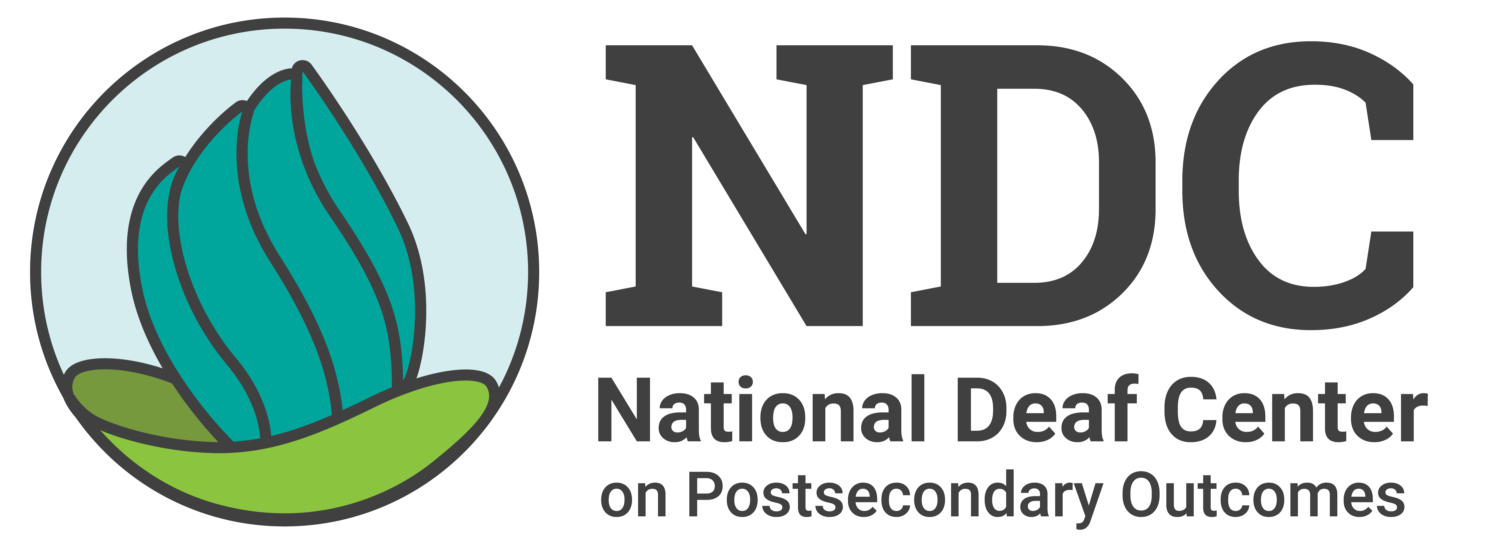Home » Resources » Access & Accommodations » Creating Welcoming Campuses » Facilities
Facilities
Campus design plays a big role in how deaf students learn, connect, and feel supported. Accessible facilities help create an environment where students can communicate more easily, stay safe, and fully take part in campus life. When deaf students can understand and interact with their surroundings, they are more likely to feel connected to their academics and their community.
There are many ways that colleges and universities can improve physical spaces for deaf students. Whether it’s a classroom, dorm, or student center, thoughtful design can make a real difference. If you’re looking for more information on specific areas, check out our related pages on Housing, Emergency Preparedness, and Campus Services.
What Do We Mean by “Accessible Facilities”?
Accessible facilities are spaces that are designed to support communication and safety—not only for deaf people, but for everyone. For example, an on-campus movie theater might offer captioning devices so deaf students can enjoy the film with friends, but those captions also benefit students who have auditory processing disorder or for whom English may not be their first language. In a stadium or sports arena, captions on the jumbotron help a myriad of students with different needs follow the action. In dorms, flashing lights in hallways or lounges can signal that there is an emergency, and accessible fire alarms may be installed in more than just one area or floor. These small but important changes help deaf students feel more included in campus life.
Essential Features of Deaf-Friendly Facilities

Classrooms and Learning Spaces
In learning environments, lighting, layout, and technology all matter. Classrooms should have bright, even lighting to support visual communication. Seating arrangements should allow students to see each other and the front of the room clearly.
Reducing background noise also helps students who rely on sound to focus and participate. Consider sound-dampening features like felt tiles on the wall, sound absorbent equipment, carpeting, and regular maintenance checks on room equipment and HVAC needs to reduce machine noises.
Prioritize purchasing furniture that is ‘quiet’ to reduce sounds from creaky boards or wooden auditorium chairs. For more on this, including examples of accessible classrooms and public spaces, check out these resources on DeafSpace design principles from Gallaudet University and Rochester Institute of Technology.

Public and Shared Spaces
Student centers, lounges, libraries, and other public spaces should be designed with clear lines of sight and open layouts. These features help deaf students see what’s going on around them and find their way more easily.
Digital signs and real-time message boards are helpful for sharing announcements or updates. In dining areas, visual menu boards and simple ways to order food (such as touch-screen kiosks) without needing to hear are helpful for many students.
Customer service desks should have staff trained in deaf-friendly communication. For support with training, try our Deaf 101 online module.
Screens and all videos shown on campus should include captions, and assistive technologies should be tested ahead of time to ensure that they will work when students need them. Videophones or video relay kiosks should be available and kept in working condition. While TTYs and TDDs still exist, they are not widely used today and often do not meet the communication needs of deaf students. Instead, campuses should explore options on how to engage and communicate with students through text messaging. For more, visit our page on captioning on campus.
Facility Accessibility and Compliance
The National Center on Accessible Educational Materials (AEM) promotes proactive access across learning environments, and Nida’s story about access on campus (video on the right) shares why this approach matters.
Emergency alert systems must include both visual and tactile alerts, such as flashing lights or vibrations, to notify students quickly. Some campuses also use visual paging systems or text-based mobile alerts to keep everyone informed. Emergency resources, including guides and announcements, should be available in American Sign Language (ASL) when possible. Learn more by checking out our Emergency/Crisis Response resources.
Campuses are required to meet ADA standards for building design. These rules help make sure spaces are physically accessible, but there is still more that can be done. Planning new spaces or updating old ones using universal design principles means thinking about a range of needs from the start—not just fixing problems later. To learn more, visit our online module on Using UDL Principles for Teaching Deaf Students Online, and explore our pages on Housing and Acoustic Audits for Campus Spaces.
It’s important to regularly check how campus spaces are working. Accessibility audits or reviews can help you find and remove barriers. Our Campus Accessibility Guide includes steps and checklists to get started. Campuses should also invite deaf students and advocacy groups to share feedback and help shape improvements. Having deaf people with lived experience on campus advisory committees can make sure planning reflects real needs and ideas.
Housing on Campus
Accessible campus housing means that students have the tools and spaces they need to live safely and comfortably. From emergency systems to common areas, every detail matters. When deaf students feel supported in their living spaces, it helps them succeed in the classroom and beyond.
Emergency/Crisis Response Resources
Emergencies and crises—like gun violence, severe weather, health outbreaks (such as COVID-19), or other disasters—can happen anytime, anywhere. Effective emergency preparedness requires a shift from an “if” mindset to an “as if” approach, planning with the assumption that crises will occur rather than just reacting when they do.
How Do Your Facilities Measure Up? Take Action Today!
Every college or university can take steps to improve campus spaces for deaf students. Review your current facilities and start planning improvements. Take part in our Deaf Awareness Micro Certificate to build your knowledge and confidence. Most importantly, involve deaf students in the process—their input can lead to lasting changes that benefit everyone!





